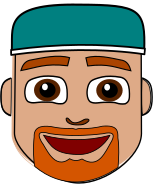What is a gallbladder?
Your gallbladder is a small pouch about the size of a plum. It stores bile, a liquid made by your liver. When you consume fat, your gallbladder empties bile into your intestine. The bile helps your body digest fat.
What is wrong with my gallbladder?
Most people with gallbladder problems make gallstones or sludge. Sludge is essentially gallstone gravel. These stones are made by your gallbladder, and they interfere with the gallbladder drainage system, causing blockages that can in some rare cases become life-threatening events. Usually the blockages are temporary, and cause severe pain for several hours at a time before going away on their own. The pain usually occurs after a meal but it can occur in the middle of the night or at other times as well.
A smaller group of people will have similar symptoms without actually having any gallstones. These folks have a gallbladder that doesn’t work normally. We call this biliary dyskinesia.
Do I need my gallbladder?
You can live a totally normal life without a gallbladder. There is no need to change your diet after your gallbladder is removed. Inside your body after surgery, you will no longer have a reservoir to store the bile made by your liver. Instead, that bile will just travel down the drainage system and empty into your intestine. Because of this change, around 20% of people may experience loose stools after the operation, this usually goes away within about 2 months. A smaller group of people experience some reflux-type symptoms after surgery, including heartburn and bloating. This usually improves with time and dietary changes like avoiding certain foods and eating smaller more frequent meals.
How is the operation performed?
Most people will have laparoscopic (“keyhole”) surgery, sometimes with robotic instruments. This usually means 4 incisions, all smaller than half an inch. One of the incisions may be slightly larger depending on the size of your gallbladder. A camera is inserted through one of the small incisions, and instruments through the others. To create space to work, your abdomen will be inflated with CO2 gas. Your surgeon will control the instruments to safely isolate and remove your gallbladder. After this, the gas is evacuated and your incisions are closed with absorbable stitches. Sometimes a small amount of gas remains after surgery, this may cause shoulder pain. If it occurs, this pain should resolve within 72 hours. A heating pad may help in the meantime.
What are the risks of surgery?
There is always a risk of bleeding and a risk of injury to other structures in your belly. Major bleeding events are very rare and occur less than 1% of the time. If you take blood thinners, this risk is increased. The gallbladder is near the colon, the stomach, the duodenum (first part of the small intestine), and the liver. The main bile duct is nearby as well. Injuries to that structure occur less than 1% of the time. Any injury could result in the need for an additional operation or procedure, but thankfully these injuries are very rare. The risk of infection is 2-5%. The risk of a retained stone in the bile drainage system that causes symptoms is also less than 1%.
I take blood thinners or heart medication. What should I do?
Many patients take medications to prevent blood clots. Some take aspirin alone, others take aspirin plus clopidogrel (Plavix) or similar, and still others may be taking warfarin (Coumadin), Xarelto, Eliquis, or other similar medications. Make sure your surgeon knows which one you are taking and why, and which doctor prescribes it for you. Your surgeon will coordinate with your Cardiologist or other prescribing physician the best time to stop taking your medication and when to restart it after surgery. If you have any questions about when to stop or start your medication contact your surgeon.
What can I expect on the day of surgery?
Most people will have outpatient surgery and will not have to stay overnight in the hospital. The night before the surgery you should not eat or drink anything after midnight, except a sip of something clear to take your medicine in the morning. Your surgeon will discuss with you which medications to take and which not to take around the time of surgery. The operation itself usually takes about an hour. There is also time to check in, time to go to sleep, time to get our equipment set up, and time at the end to wake up and recover. You will need a ride home and will not be able to drive for 24 hours after surgery.
What can I expect after the surgery?
You will have pain and soreness, usually managed with mild prescription pain medication in combination with over the counter medications like Tylenol and Motrin. You may develop bruising around your incisions, this is normal. You should be able to shower and drive after 24 hours. Do not drive when taking prescription pain medication. Typically the first week is when soreness is the worst, and by the second week most people are beginning to get back to normal. You will have to take it easy for the first 2 weeks after surgery – no heavy lifting or other strenuous activity. After that you can gradually ramp up your activity level as your body allows. Usually by about 6 weeks after surgery you will have no more activity restrictions. If you are over 60, it may take a few months for your energy levels and appetite to return to normal.
